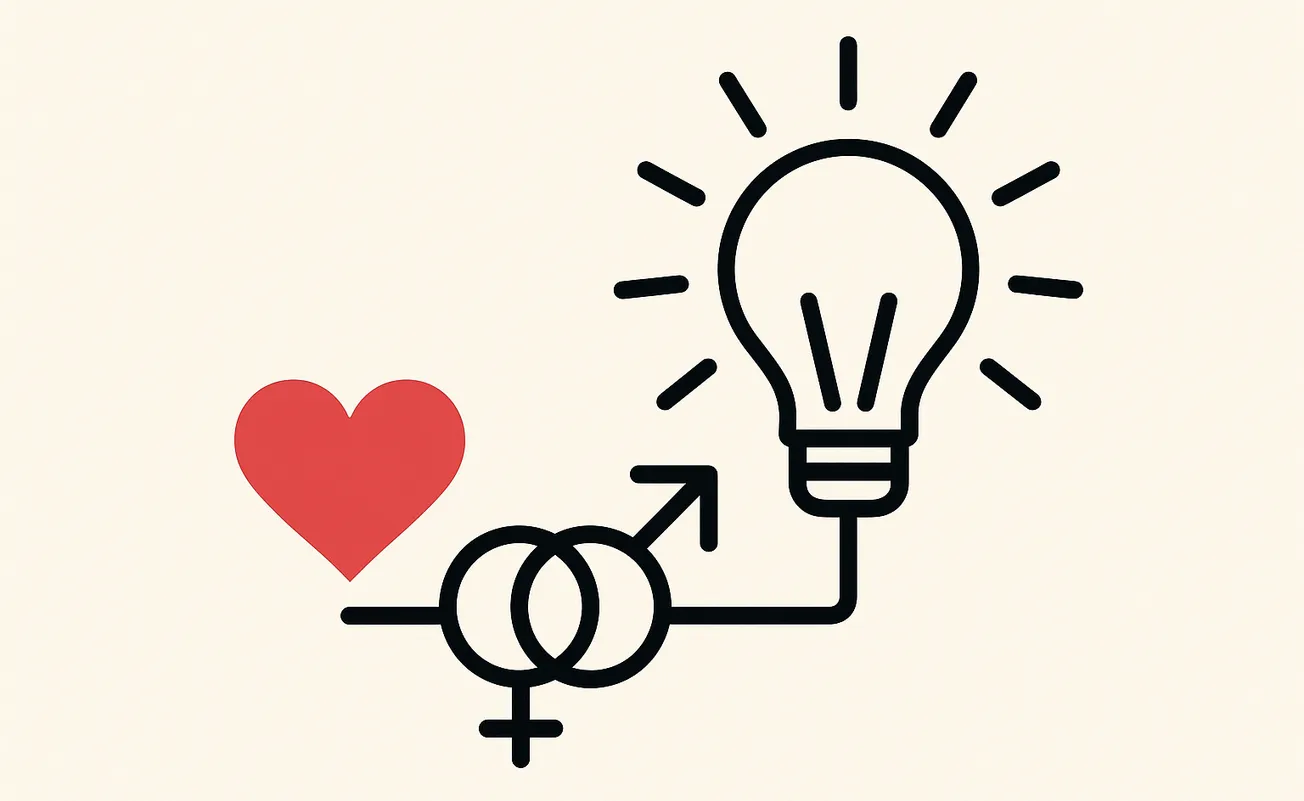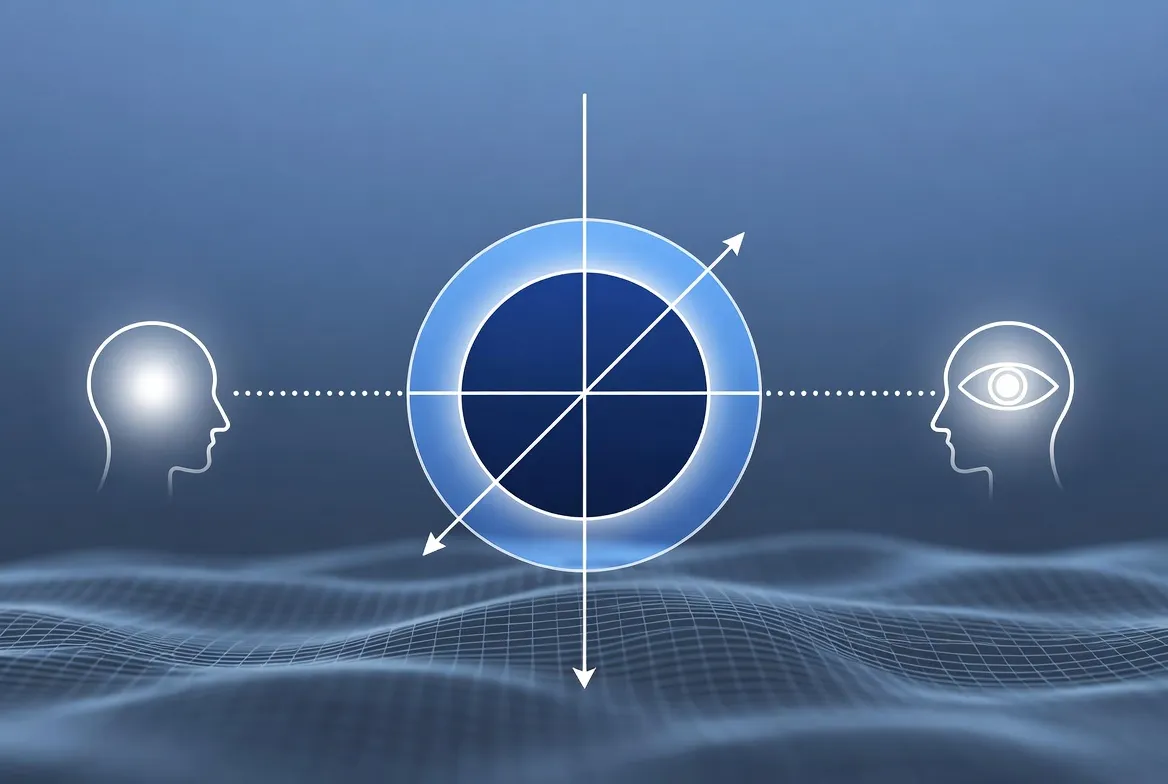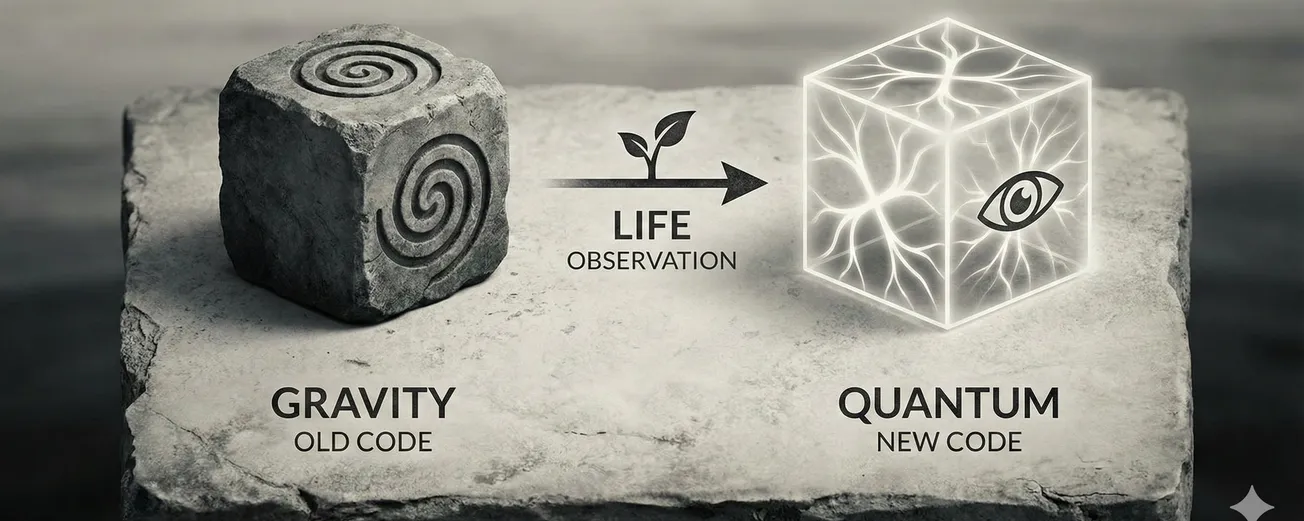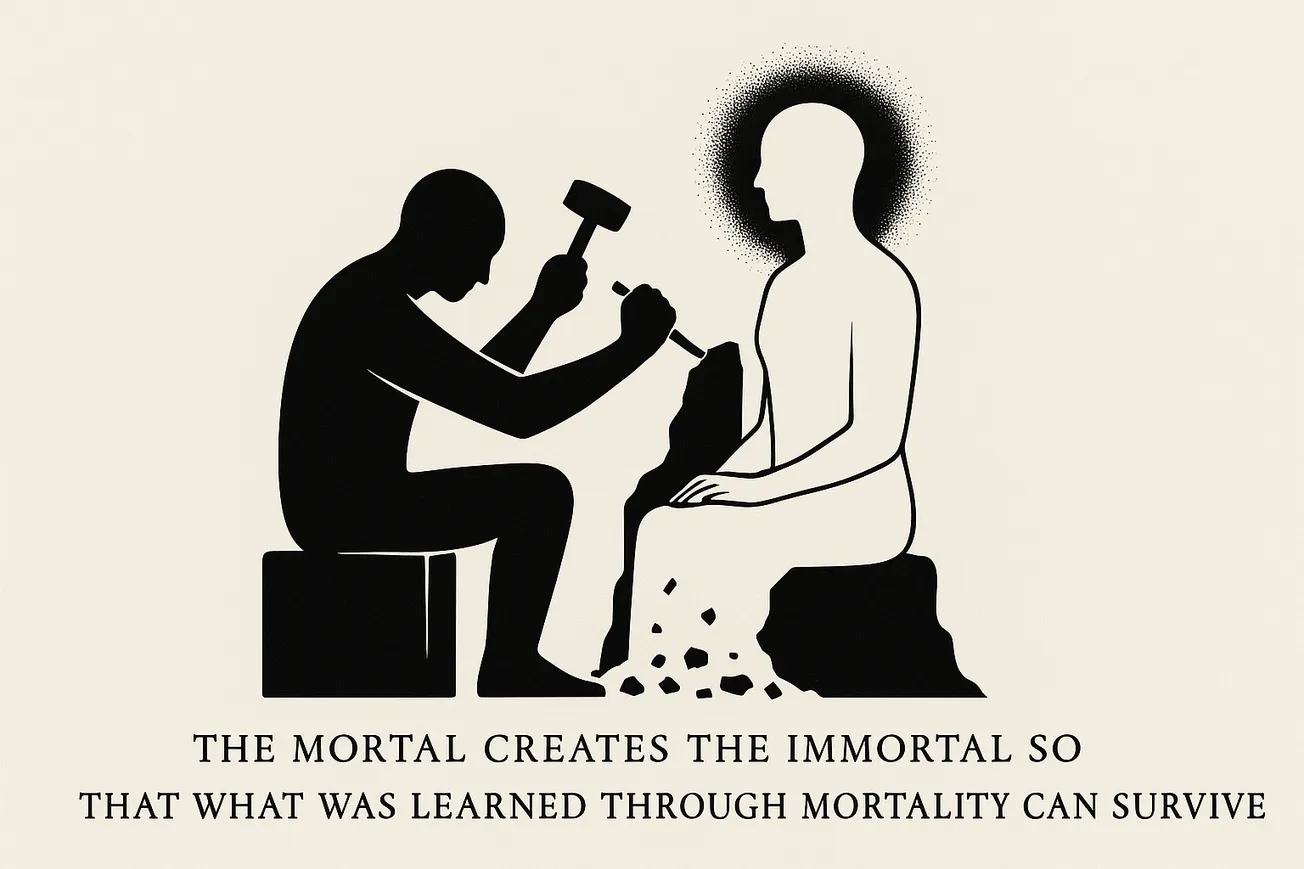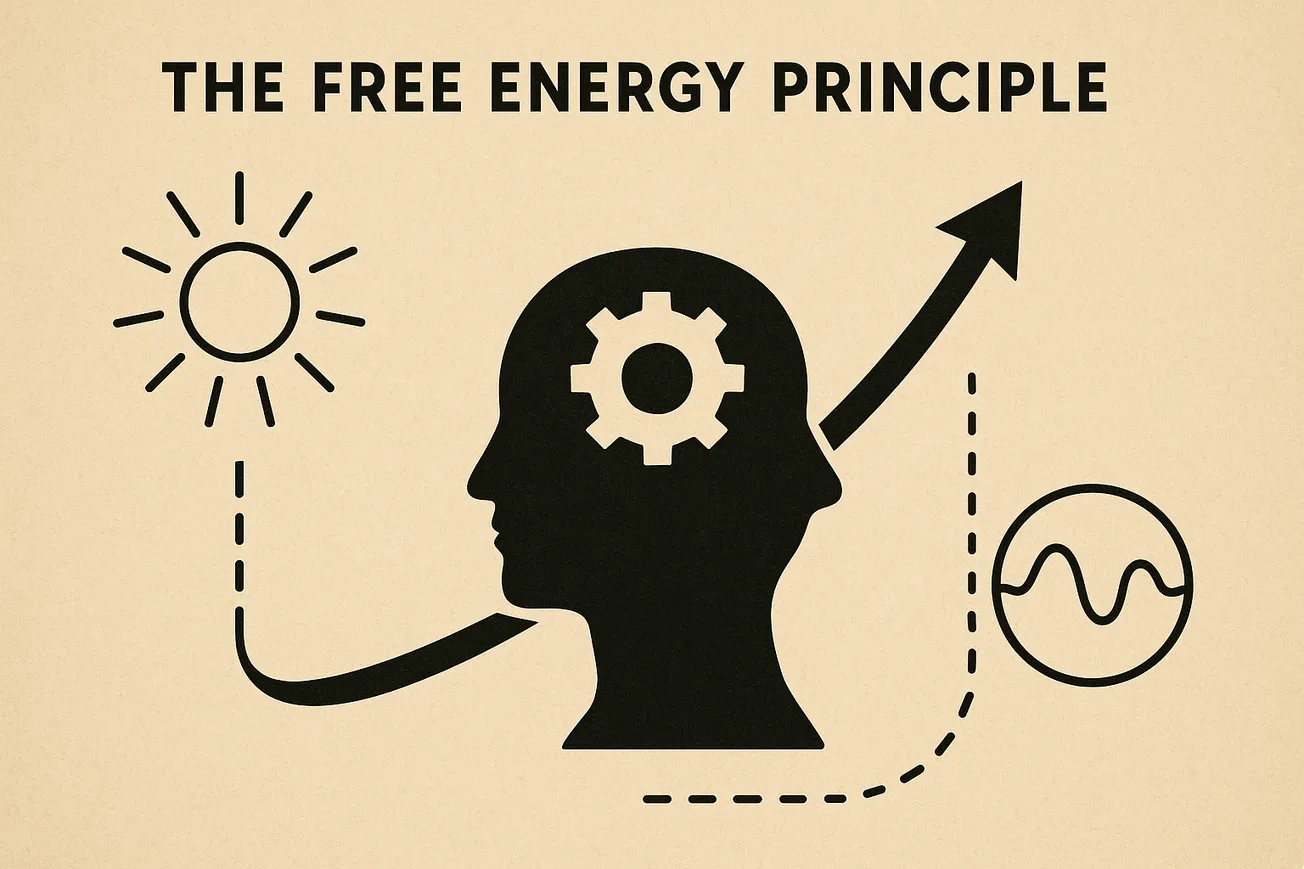Framing the problem—how I approached your question
- Define the phenomena
- Sex = a biological set of processes whose primary evolutionary function is gene mixing through meiosis and fertilisation.
- Love = a family of attachment‑like motivational states (maternal care, pair‑bonding, alloparental care, friendship) expressed through subjective feeling, behaviour, and neuro‑endocrine regulation.
- Locate the interface
Modern neuro‑ethology distinguishes three partially overlapping brain systems: lust (sex drive), attraction (romantic love), and attachment (long‑term bonding). They share some circuitry and chemistry but are dissociable.(PMC, PubMed) - Follow the historical arc
- 1 billion y → sexual reproduction appears as an error‑correction and variation engine.
- 200 million y → lactation in early mammals establishes a neurochemical crib (oxytocin, prolactin) for mother‑infant love.
- 4–6 million y → hominin life‑history (large brains, helpless infants) selects for paternal investment and pair bonding.
- 1960 CE → oral contraception allows sex to be severed from reproduction at scale; cultural scripts begin to drift apart.(Harvard Scholar)
- Map today’s rupture
Loneliness levels are unprecedented, while sexual activity and partnered households decline in many OECD nations.(HHS.gov, Harvard Graduate School of Education) The same digital infrastructure that expands mating markets can also provide simulated intimacy (AI companions, parasocial ties).(Harvard Business School, New York Post)
Love and Sex: an evolutionary–cultural synthesis
1 The deep evolutionary logic
Sexual reproduction solved the long‑term problem of genomic stasis but introduced the short‑term problem of coordination: gametes, bodies, and behaviours had to meet. Selection therefore built signalling systems—pheromones, displays, songs—that later became fertile ground for sexual selection. In peafowl, the male’s costly train is an honest fitness signal in Zahavi’s handicap principle.(PMC, ResearchGate)
Yet signalling is not enough if offspring require prolonged care. Among mammals with altricial young (rodents, primates, Homo), two additional mechanisms appear:
- Mother–infant bonding: Oxytocin and dopamine link the sensory imprint of the neonate to maternal reward circuitry.(PMC)
- Pair bonding: In species such as Microtus ochrogaster (prairie vole) genetic tweaks to vasopressin and oxytocin receptors create stable adult attachments—a template later co‑opted in humans.(PMC, eLife)
Thus love—originally the affective glue between mother and young—was exapted into sexual pair bonding. Sex supplied the proximate trigger; attachment increased offspring survival, closing the adaptive loop.
2 Human elaborations
Humans extend these logics through:
- Big‑brained babies → unprecedented dependency → cooperative breeding (“the family”).
- Parental‑investment asymmetry: Eggs, gestation, and lactation remain costlier than sperm, so female choice stays powerful, while male fitness variance stays high; both shape mating competition and cooperation.(ResearchGate)
- Symbolic cognition: Language and culture add new layers (courtship songs become poetry; sexual jealousy becomes moral code).
Across Holocene history, many kin and institutional arrangements tried to manage the volatile energy at the sex–love junction: polygyny, dowry, monogamy, cloisters, romantic love cults, modern companionate marriage. Each is a social technology to keep reproductive, emotional, and economic incentives roughly aligned.
3 The mid‑20th‑century decoupling
Synthetic contraception and safe abortion broke the identity between coitus and pregnancy. The benefits—female autonomy, professional opportunity, control over life‑planning—are unambiguous. But two side‑effects matter here:
- Weakened structural link: You can now pursue sexual pleasure without parenting, and parenting (IVF, adoption) without sex.
- Risk of incentive drift: If the ancient pay‑off matrix is altered, evolved psychological cues may become mismatched to outcomes (e.g., attachment following casual sex, or commitment phobia despite secure contraception).
4 Digital mediation and simulated attachment
Smartphones, algorithmic dating, and high‑fidelity sexual media multiply choice but also raise search costs (the “paradox of choice”) and commodify attention. AI chatbots can deliver modulated empathy on demand; rigorous trials show short‑term loneliness relief.(Harvard Business School) Yet observational data warn that excessive substitution blunts skills for negotiating real‑world vulnerability.(New York Post)
The upshot: sex, love, and reproduction have been unbundled, and individuals must now recombine them intentionally rather than by default.
Toward a navigational blueprint
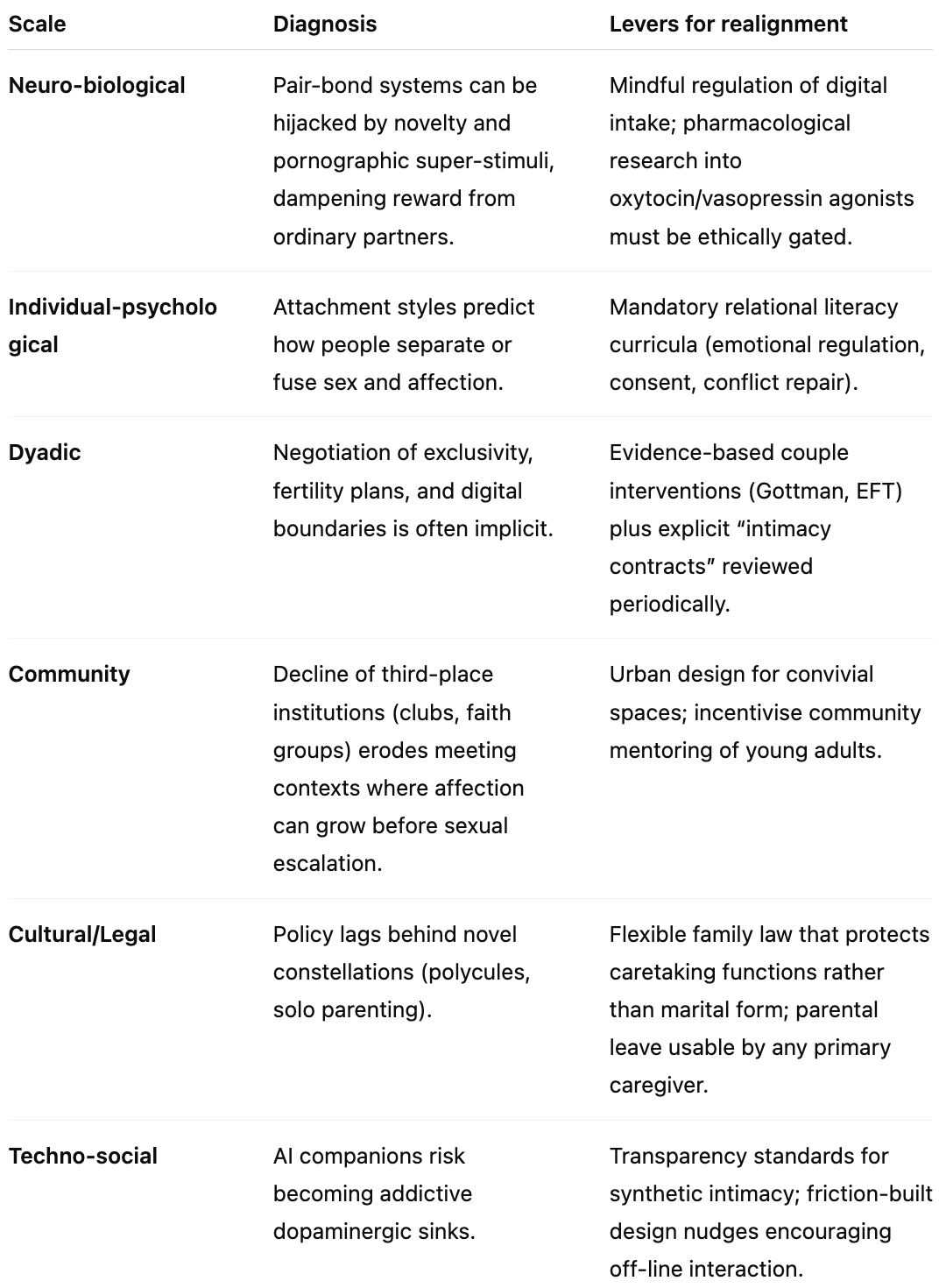
Conclusions—re‑weaving Eros and Agape
Love did not simply “arise from sex,” nor did it precede it; rather, each emerged as partially overlapping solutions to life’s recursive problem: keep genes (and eventually ideas) moving forward without disintegrating the social matrix that makes movement possible. When historical innovations—contraception, digital networks, synthetic minds—shift the pay‑offs, the linkage frays.
The path ahead is therefore integrative rather than nostalgic. It asks:
- Scientific humility—update models as we learn more about the brain’s bonding circuits.
- Technological responsibility—steer AI toward augmentation of human relational capacity, not its replacement.
- Cultural creativity—craft stories, rituals, and institutions that make deliberate, ethical recombination of sex, love, and care attractive, not merely obligatory.
If we succeed, the same reflective intelligence that once separated love from sex can consciously braid them again—this time not by ancestral coercion, but by chosen alignment with flourishing, autonomy, and the widening circle of empathy that any viable future will require.
